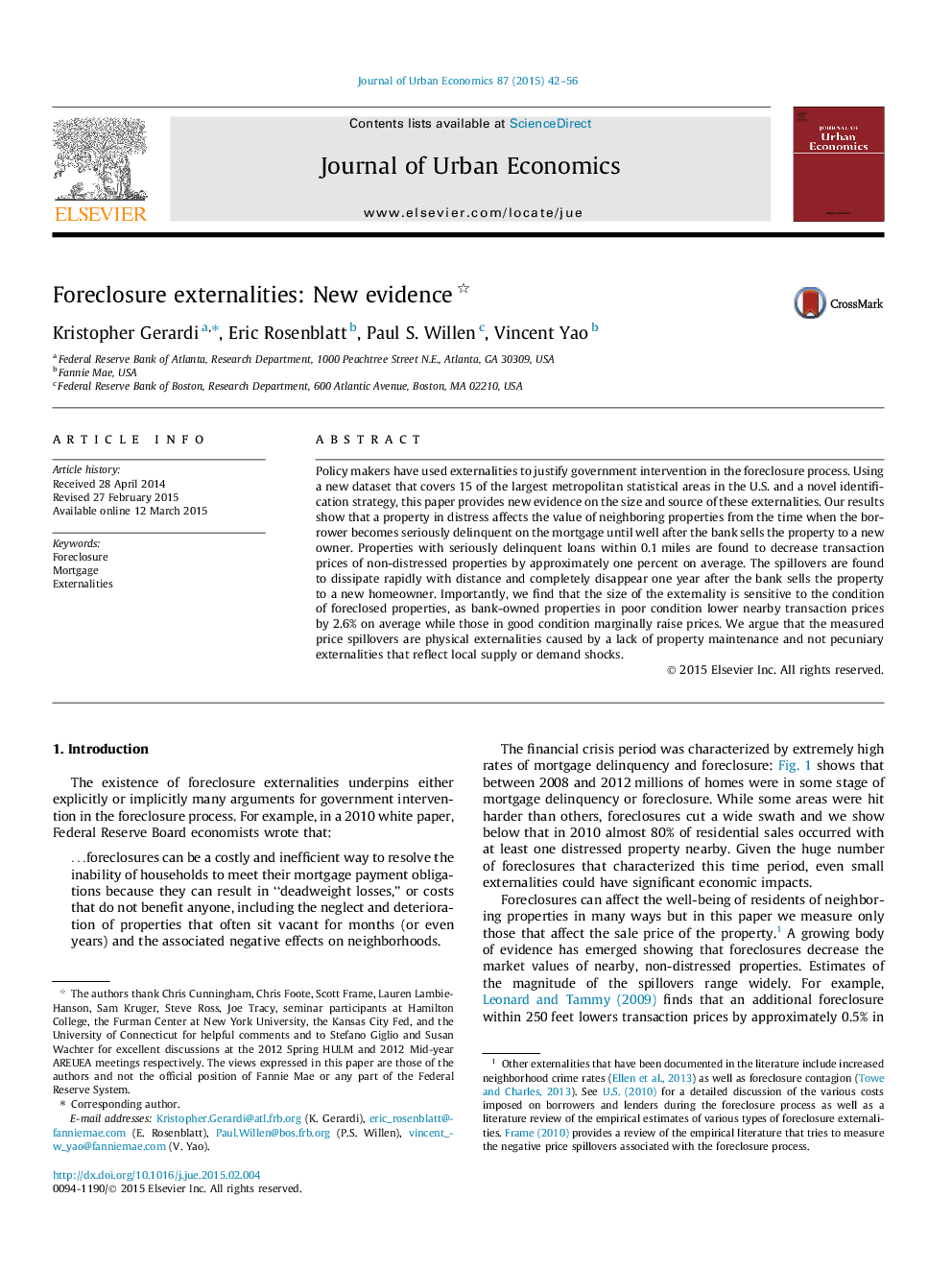| Article ID | Journal | Published Year | Pages | File Type |
|---|---|---|---|---|
| 971142 | Journal of Urban Economics | 2015 | 15 Pages |
Policy makers have used externalities to justify government intervention in the foreclosure process. Using a new dataset that covers 15 of the largest metropolitan statistical areas in the U.S. and a novel identification strategy, this paper provides new evidence on the size and source of these externalities. Our results show that a property in distress affects the value of neighboring properties from the time when the borrower becomes seriously delinquent on the mortgage until well after the bank sells the property to a new owner. Properties with seriously delinquent loans within 0.1 miles are found to decrease transaction prices of non-distressed properties by approximately one percent on average. The spillovers are found to dissipate rapidly with distance and completely disappear one year after the bank sells the property to a new homeowner. Importantly, we find that the size of the externality is sensitive to the condition of foreclosed properties, as bank-owned properties in poor condition lower nearby transaction prices by 2.6% on average while those in good condition marginally raise prices. We argue that the measured price spillovers are physical externalities caused by a lack of property maintenance and not pecuniary externalities that reflect local supply or demand shocks.
